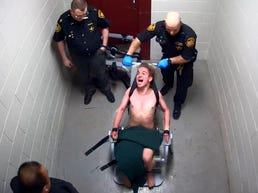The ongoing scandal ignited by a leaked document does not change the fact that Columbus City Schools’ massive physical footprint is a hindrance to it fully providing students the education they deserve and taxpayers the best return on their investment.
The unhinged, unethical and thankfully unexecuted “Taking Control of the Task Force Narrative” strategic plan would have silenced critics of a plan to close as many as 20 of Columbus City Schools’ 113 facilities. The document is embarrassing and offensive but it should not stop progress of the Superintendent’s Community Facilities Task Force.
If executed fairly, thoughtfully and with true public and expert input, closing some Columbus schools will help produce better CCS graduates by freeing up building maintenance funds that could be directed toward modernization efforts, academics and other student achievement-based endeavors.
Some of the closed properties could also be sold or leased.
The 8.3 million-square-foot school district

This is not the first time a task force has been assembled to consider closing schools.
It was clear when school closings were recommended in October 2018 and it is clear now: the district’s 8.3 million-square-foot facility footprint is too large and must be reduced.
By one estimation, CCS Superintendent Angela Chapman shared with members of our editorial board that the Columbus schools have 30 more buildings than districts of similar demographics and sizes around the nation.
Columbus City Schools students deserve programs in spaces that fully function, which is not happening despite modernization efforts already undertaken in some schools.
“We have a high school that has been renovated that has maybe 400 students in it, but it could have 1000 students,” Chapman told our board. “That’s truly not us maximizing our resources.”
CCS — Ohio’s largest school district — owns a dozen properties that are either leased or vacant.
This should be about kids, not buildings
We understand why there has been community pushback over closing schools.
Schools are more than buildings. They spark fond memories in graduates’ minds. Current students should feel a sense of ownership.
That said, the investment Columbus taxpayers have made in the district—tthe $100 million a year more approved in 2023 included—wwould be better spent on student achievement than maintaining outdated buildings.
“We have some buildings that are still operational that were built before there was electricity,” Chapman told us.
The oldest Columbus City Schools facility was constructed in 1895, and the average age of buildings is 45 years old.
The district’s annual capital improvements budget is $60.49 million, which does not include all funding sources and departments like Buildings and Grounds.
This must be a community decision

Closing schools under any circumstances is naturally an emotional endeavor and should be handled with care.
The public must be involved in the process to make sure Columbus Board of Education shutters the appropriate building and consolidates the right programs.
Successful programs must be maintained, and the needs of English language learners and other vulnerable students must be met.
Parents, students, taxpayers, teachers and other concerned parties must share their ideas and concerns about the nine recommended scenarios proposed by the Superintendent’s Community Facilities Task Force at special sessions being held through Thursday, June 6.
‘The buildings don’t get younger. They get older.”
The district’s enrollment peaked at 110,173 during the 1971–72 school year. It now has about 46,000 students.
Chapman told us that 30 Columbus schools have close to or fewer than 200 students, and several schools do not have enough boys or girls enrolled to be eligible for participation in certain extracurricular sports.
Some schools are so old that they cannot handle the HVAC systems demanded during the 2022 Columbus Education Association strike.

“You got HVAC, but guess what? Now the ceiling is falling because the structures are not built for this type of’modern technology’,” Chapman said. “We can’t keep skirting around this issue and thinking it’s going to get better. The buildings don’t get younger. They get older.”
The school board did not close schools the last time it was proposed. It should do so this time.
The school board voted Wednesday to censure member Brandon Simmons whom it says was solely responsible for the leaked “Taking Control of the Task Force Narrative” memo.
The root of the document’s creation must continue to be exposed in an open and transparent way. But as the old adage says, multiple things can happen at once.
The school board can and should address that scandal and close schools.
CCS has a responsibility to ensure students receive a quality education while being good stewards of taxpayer dollars.
This piece was written by Dispatch Opinion Editor Amelia Robinson on behalf of the editorial board of The Columbus Dispatch. Editorials are fact-based assessments of issues of importance to the communities we serve. These are not the opinions of our reporting staff members, who strive for neutrality in their reporting.

















































